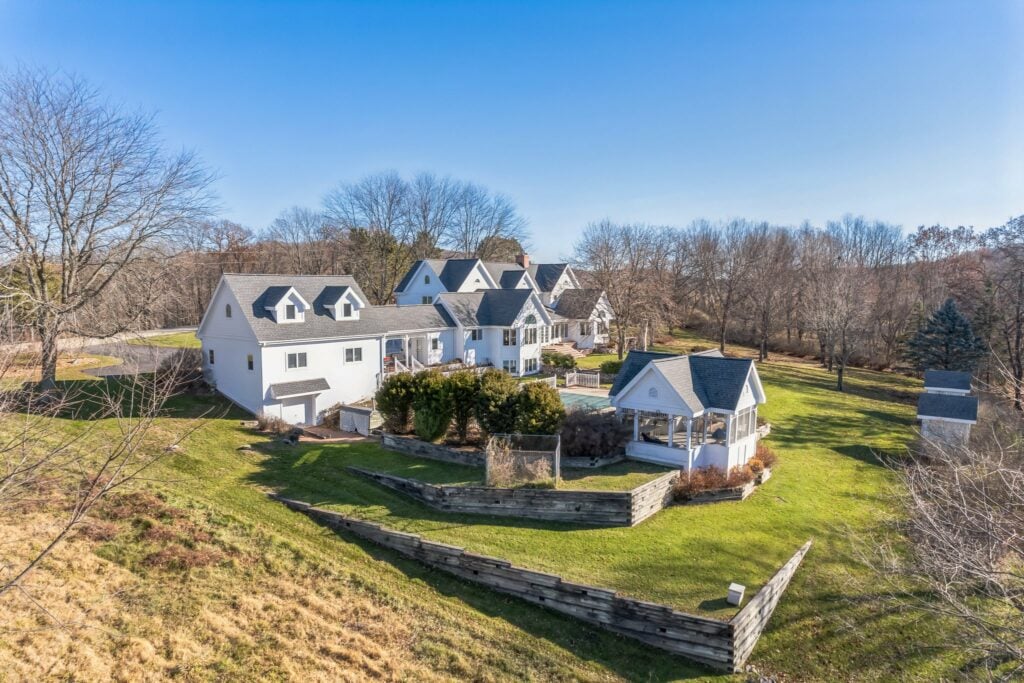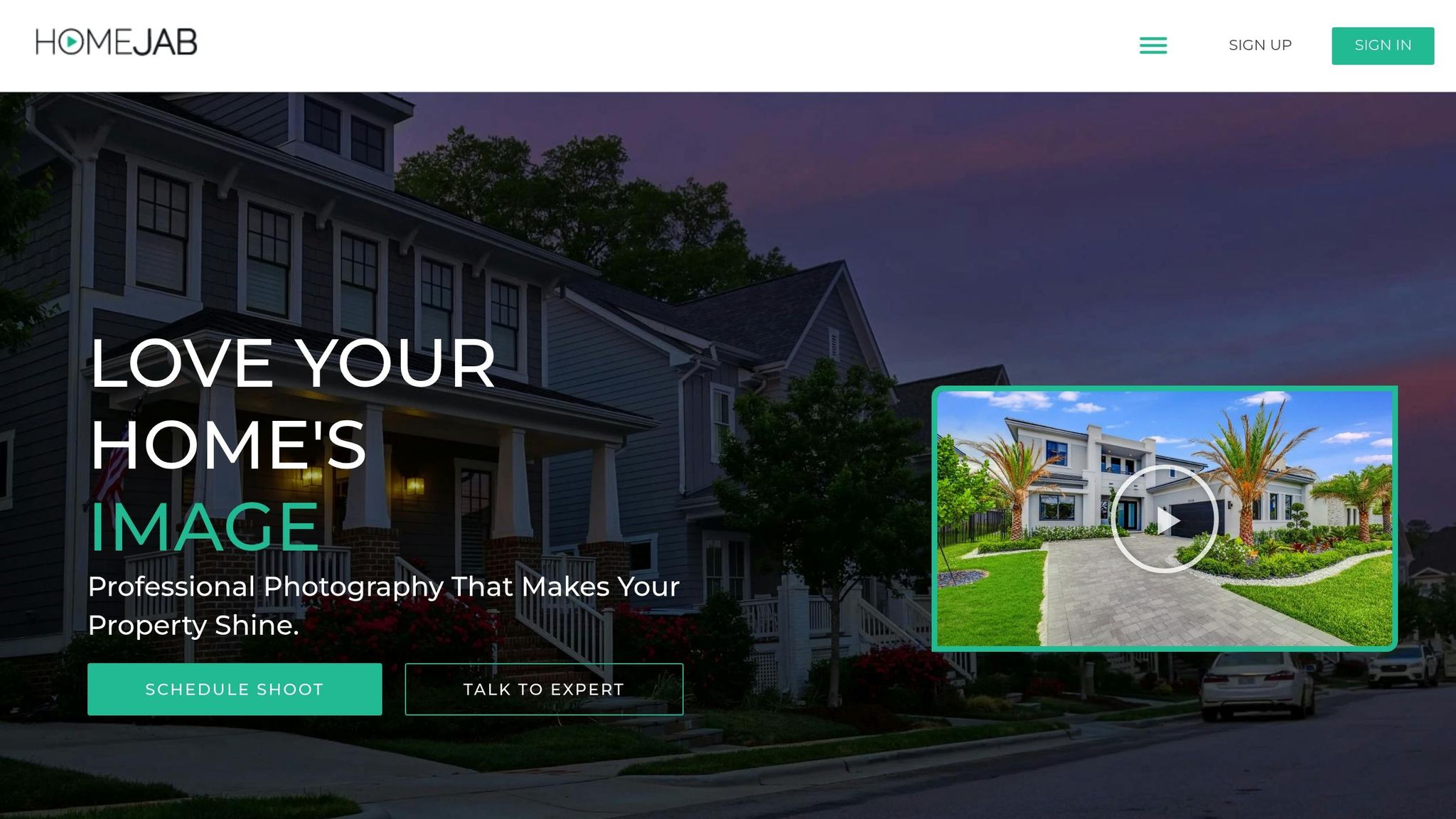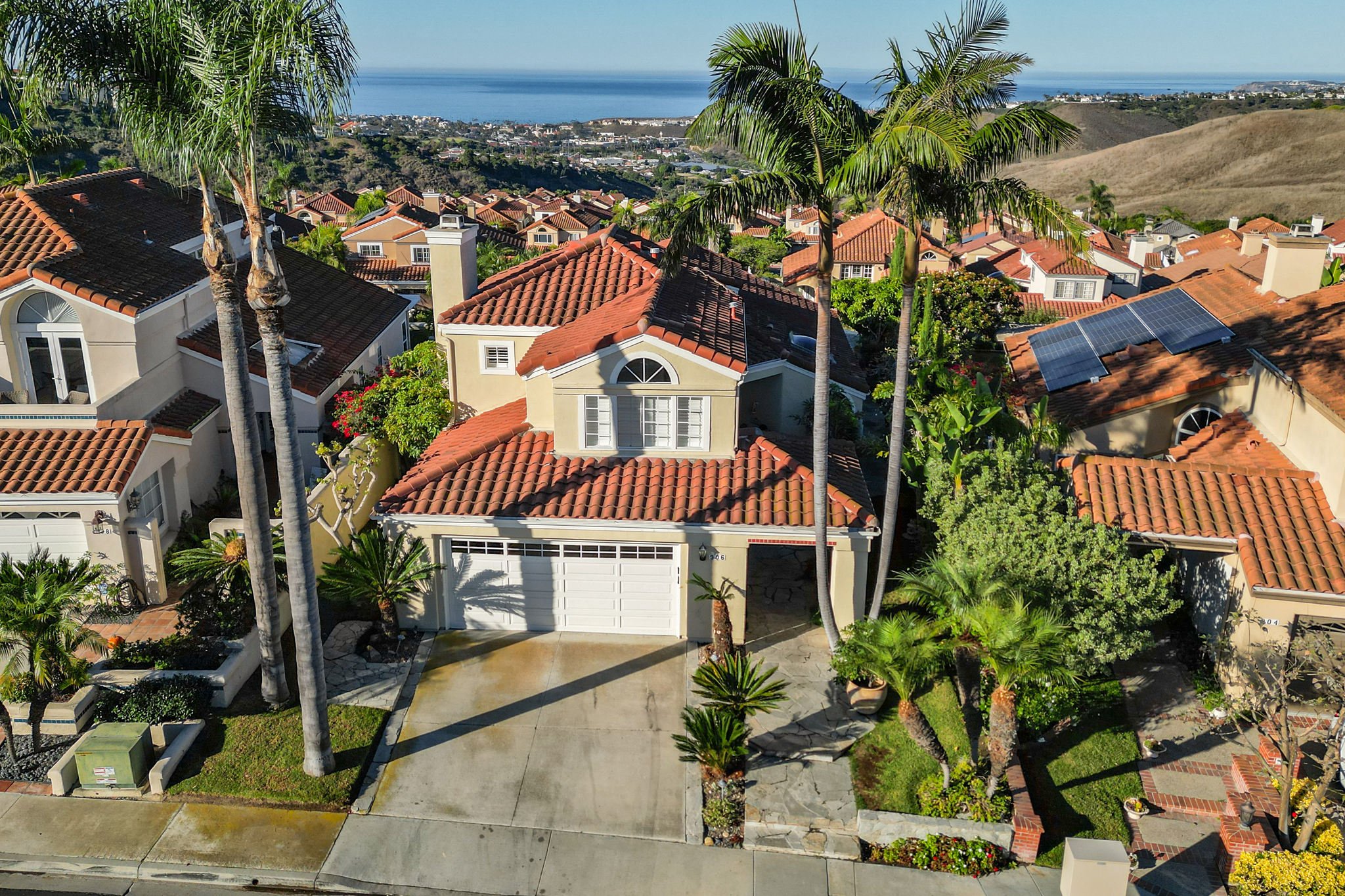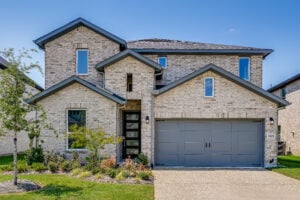Keyword stuffing can ruin your real estate listings. It makes your content hard to read, damages your SEO, and can even get you penalized by search engines. Instead, focus on using keywords naturally to create engaging, informative content for both buyers and search engines.
Key Takeaways:
- What is Keyword Stuffing? Overloading content with repetitive keywords to manipulate rankings. Example: Repeating “luxury Miami waterfront home” excessively.
- Why Avoid It? Search engines penalize it, and it hurts user experience, increasing bounce rates.
- How to Use Keywords Effectively:
- Write for people first, then optimize for search engines.
- Place keywords strategically in titles, meta descriptions, and opening paragraphs.
- Use long-tail and location-specific keywords for better targeting.
- Common Mistakes: Repeating keywords, awkward phrasing, and poorly written meta descriptions.
- Pro Tip: Pair natural keyword use with professional visuals like high-quality photos, videos, and virtual tours to enhance listings.
By focusing on clear, reader-friendly content and smart keyword placement, you can boost your SEO while keeping your listings engaging and professional.
Real Estate SEO: Beginner’s Guide to Using Keywords to Boost Your Blog
How to Use Keywords Naturally
Creating content that resonates with your audience while smartly incorporating keywords is the cornerstone of successful SEO. The key? Focus on delivering value, and let the keywords fall into place naturally.
Write for People First
The primary goal of your content should always be to engage and inform your audience. While keywords help guide your content, the real win comes from answering search queries and providing insights that users can’t easily find elsewhere.
“To effectively incorporate SEO keywords into your website content without resorting to keyword stuffing, focus on creating content that naturally integrates these keywords within a valuable context”, says Meaghan Loraas from Virtuance.
For example, when writing property descriptions, think about what buyers want to know. Instead of forcing keywords like “houses for sale near me” into every sentence, focus on crafting listings that highlight neighborhoods, local amenities, and market trends. This approach not only helps readers but also aligns with search engine expectations.
Start by understanding what your audience is searching for and weave relevant keywords into your content in a way that feels organic and helpful.
Place Keywords in Key Areas
Once you’ve written content with your audience in mind, the next step is to strategically place keywords where they’ll have the most impact on SEO. Focus on areas like titles, meta descriptions, and the opening paragraphs of your content.
Catchy titles and headlines that include primary keywords can boost click-through rates. In property descriptions, naturally work in keywords while emphasizing standout features of the property. As Kelly Sanchez from Sierra Interactive puts it:
“Descriptions in your property listings should include relevant keywords. Mention the location, key features and any unique selling points”.
Meta descriptions are another prime spot for keywords. These brief summaries should be clear, engaging, and include target terms naturally.
Here’s an example of how to transform a generic property listing into one that’s optimized for both readers and search engines:
Before: “Charming three-bedroom, two-bath home. Updated kitchen. Must see!”
After: “Charming three-bedroom, two-bath home in the heart of Mission Bay. Updated kitchen with quartz countertops, walking distance to UCSF Medical Center and local cafés. Quick access to Mission Creek Park.”
The revised version doesn’t just include keywords – it paints a vivid picture of the home, its location, and nearby amenities, all while maintaining a natural tone.
Use Long-Tail and Location Keywords
To refine your keyword strategy, incorporate long-tail and location-specific keywords. Long-tail keywords are longer, highly specific phrases that may have fewer searches but often indicate higher intent. These keywords are especially useful for attracting serious buyers who know exactly what they’re looking for.
Consider this: long-tail keywords are 36% more likely to convert than short-tail ones, and 92.43% of Google searches are made 10 or fewer times per month.
Matt Beall, principal broker of Hawaii Life, explains:
“If someone types in ‘single-level plantation-style home with an infinity edge pool and an ocean view,’ that’s a serious search. If they get a return and find something that’s written well and includes those phrases, you’ve already started a rapport”.
Location-specific keywords, on the other hand, help you connect with local audiences. Instead of generic terms like “homes for sale”, try phrases like “Victorian homes in Pacific Heights” or “condos near downtown Austin tech district.” These phrases not only target specific areas but also cater to buyers searching with a clear location in mind.
To get started, brainstorm phrases your audience might use, then refine them with keyword research tools. By combining long-tail and location-specific keywords with natural, reader-friendly writing, your content will appeal to both search engines and potential clients.
Keyword Mistakes to Avoid
Even with the best intentions, real estate professionals often fall into common keyword traps that can hurt their listings’ performance. Understanding these pitfalls can help you create content that resonates with both search engines and potential buyers.
Stop Using Repetitive Keywords
One of the most common missteps in real estate listings is the overuse of the same keywords. This practice, known as keyword stuffing, creates awkward, unnatural content that can turn off potential buyers. Google’s Search Liaison, Danny Sullivan, puts it plainly:
“Keyword stuffing is actual spam and tends to be repeating a term in non-sensical patterns over and over… Instead, it is unhelpful writing”.
For instance, consider this clunky example of location stuffing: “Homes Available – North Austin TX, Leander TX, Pflugerville TX, Georgetown TX, Round Rock TX”. This doesn’t provide any real value to buyers and can come across as spammy.
The fix? Mix it up with variations and synonyms. Instead of saying “spacious” multiple times, try words like “roomy”, “generous”, or “expansive.” This keeps your content engaging while still targeting relevant terms.
Research also shows that overly keyword-heavy content drives users away faster, which can hurt your SEO rankings. To keep things natural, aim for a keyword density of 1-2%. And don’t stop at the main content – check for repetitive phrases in meta descriptions too.
Keep Meta Descriptions Balanced
Meta descriptions are a crucial part of your listing, offering a chance to highlight keywords while persuading users to click. However, many professionals misuse this space, leading to descriptions that either sound robotic or fail to capture attention.
Google rewrites 60% to 70% of meta descriptions, often because the originals are poorly written. This makes it even more important to craft descriptions that are both keyword-rich and engaging.
Here’s an example of what NOT to do: “Sewing supplies, yarn, colored pencils, sewing machines, threads, bobbins, needles”. This reads like a laundry list and adds no value for readers. Instead, aim for something like: “Get everything you need to sew your next garment. Open Monday-Friday 8-5pm, located in the Fashion District”.
For real estate, avoid generic phrases like, “Beautiful home for sale in great neighborhood with amazing features.” Instead, go for specific, engaging descriptions that naturally incorporate keywords: “Stunning 3-bedroom Victorian in Pacific Heights featuring original hardwood floors, updated kitchen, and Golden Gate Bridge views. Walking distance to Fillmore Street shops and restaurants.”
Well-written meta descriptions can be the deciding factor that drives clicks to your listing over a competitor’s. Make sure your descriptions address what buyers are searching for and highlight how the property meets their needs.
Once your meta descriptions are polished, it’s time to refine your keyword research strategy.
Use Keyword Tools Correctly
Even after fixing repetitive keywords and balancing meta descriptions, many real estate professionals misuse keyword tools, leading to poor keyword choices that don’t align with buyer intent or market realities.
A common mistake is focusing solely on high-volume keywords without considering competition or relevance. Just because a keyword sees 10,000 monthly searches doesn’t mean it’s the right fit for your local real estate market.
Another frequent error is overlooking long-tail keywords, which tend to convert better. In fact, long-tail keywords are 36% more likely to convert than shorter, more generic terms. Additionally, 92.43% of Google searches are made 10 or fewer times per month.
When using keyword tools, prioritize terms that align with your audience’s actual search behavior. For example, instead of targeting broad terms like “real estate”, go for phrases with buying intent, like “homes for sale in [neighborhood]” or “condos near [landmark].”
Also, pay attention to competition levels. Highly competitive keywords can be tough to rank for, especially when going up against major platforms. Instead, focus on medium-competition keywords that still offer good search volume.
Finally, validate your keyword choices against real-world search habits. If a tool suggests a term like “domicile acquisition services” but buyers are searching for “homes for sale”, always go with the language your audience uses.
The goal is to strike a balance between search volume, competition, and relevance to your market. Think of keyword tools as a guide to inform your strategy – not as the final word.
Add Professional Media to Listings
In the same way that natural keyword use strengthens SEO, professional media is essential for grabbing buyer attention. High-quality visuals not only enhance the appeal of your listings but also reduce the need for repetitive keyword usage. When potential buyers can clearly see the property’s features through professional media, they’re more likely to engage. Let’s break down how different types of professional media can elevate your listings.
How Professional Photos and Videos Help
Professional visuals achieve what keywords alone can’t – they captivate buyers instantly. Did you know buyers spend about 60% of their time looking at property photos and just 20% on descriptions? That’s why professional photography can make a huge difference. Homes with professional photos receive 61% more views, sell 32% faster, and even command a 47% higher price per square foot.
Different types of media offer unique advantages. For example, HDR photography highlights every detail with perfect lighting, helping properties sell 50% faster. Aerial photography is another game-changer, boosting engagement by up to 83% and increasing a listing’s chances of selling by 68%. Video content is just as impactful – listings with videos see 403% more inquiries, and 80% of high-value homes sell within six months of launching a video.
Virtual tours and 360-degree images take things a step further by immersing buyers in the property. These features nearly double buyer engagement compared to listings without them. Plus, 93% of buyers prefer listings that include floor plans, making these tools indispensable.
HomeJab‘s Media Services
HomeJab offers specialized media services to help real estate professionals showcase properties in the best possible light. By connecting agents with vetted photographers, HomeJab ensures high-quality media that boosts engagement and positions listings to stand out.
Here’s a quick look at their offerings:
- HDR Photography: Packages range from $229–$379 and include 15–50 enhanced photos with perfect lighting and detail. Images are delivered within 24 hours, ensuring your property looks its best without relying on text-heavy descriptions.
- Aerial Photography: Starting at $249, this service provides drone photos and videos, giving buyers a unique perspective of the property and its surroundings. With 73% of homeowners preferring agents who use drone photography, this service can set you apart.
- 3D Virtual Tours: Priced between $315–$869, these interactive tours let buyers explore properties remotely.
- Virtual Staging: At $50 per photo, this cost-effective option allows you to showcase a room’s potential without the expense of physical staging.
“With 97 percent of home buyers using the internet when searching for homes, according to the National Association of Realtors, professional photos, video, and other advanced imaging tools are more important than ever. Using professional imaging can mean a faster home sale and enhance a real estate agent’s reputation in the marketplace.”
- Joe Jesuele, Founder and CEO of HomeJab
| Service Type | Features | Turnaround Time |
|---|---|---|
| HDR Photography | 15–50 enhanced photos with optimal exposure | 24 hours |
| Virtual Staging | Virtual furniture placement and design visualization | 24–48 hours |
| Aerial Photography | Drone photos and videos showcasing property views | 24–48 hours |
| 3D Virtual Tours | Interactive walkthroughs highlighting property details | 24–48 hours |
One of HomeJab’s standout features is its 24-hour turnaround time, ensuring your listings go live quickly. For agents managing multiple properties, bulk pricing options make professional media accessible and cost-effective.
Balance Keywords with Quality Content
The best listings strike a balance between keyword optimization and engaging, high-quality content. This approach works hand-in-hand with strategic keyword placements and the professional media strategies discussed earlier.
Key Points to Remember
Always prioritize clear, easy-to-read content while weaving in keywords naturally. Stick to keyword density guidelines to ensure your listings remain fluid and authentic.
Using location-specific keywords is critical since over 95% of homebuyers start their search online. To capture this audience, create landing pages tailored to specific neighborhoods or areas within your city.
Great content builds trust and credibility. Informative, well-written content positions your business as a reliable source, helping to establish trust with potential buyers and boosting brand visibility. Address common questions, concerns, and interests to engage readers. It’s worth noting that 49% of marketers say organic search delivers the highest ROI compared to other digital channels.
A simple tip: read your content out loud to catch awkward keyword placements or repetitive phrases. This technique ensures your descriptions flow naturally while still including essential keywords like location details, standout features, and unique selling points.
Use Professional Tools for Better Results
Pairing naturally integrated keywords with high-quality visuals makes your listings even more compelling. Professional media services allow you to showcase properties effectively without relying heavily on repetitive keywords. When buyers can clearly see a property’s features through great visuals, the need for keyword-heavy descriptions diminishes.
“By tailoring my messaging to what potential clients are searching for online, I’ve been able to create valuable connections and ultimately turn leads into conversions. It’s proof that a well-executed real estate SEO keyword strategy can truly dominate the market.” – Benjamin Scott, Keyword Specialist
Professional media services, like HomeJab’s comprehensive packages, let you craft descriptions that focus on authentic features and benefits instead of overloading them with search terms. This approach keeps your content clear and maintains SEO integrity.
The combination of natural keyword usage and professional visuals results in listings that appeal to both search engines and potential buyers. It helps you avoid keyword stuffing penalties while ensuring your content remains effective and engaging.
As market trends shift, adapt your SEO strategy to stay relevant. Focus on creating content that resonates with your audience – this not only boosts your website’s visibility but also drives more traffic and leads.
FAQs
How can I make my real estate listings SEO-friendly without overusing keywords?
Creating SEO-friendly real estate listings is all about crafting engaging, natural descriptions that showcase a property’s standout features. Instead of stuffing your text with keywords, aim to use them sparingly and only where they make sense – like in headings, property details, or image alt text.
Repeating the same terms too often can actually harm your rankings, so mix things up with related phrases or synonyms to keep your content fresh and interesting. Focus on the user experience by making your listings clear, informative, and aligned with what potential buyers are looking for. Adding high-quality visuals, such as professional photos or virtual tours, can take your listings to the next level, drawing in more interest and boosting engagement.
How can I effectively use long-tail and location-specific keywords in property listings?
To make the most of long-tail and location-specific keywords in your property listings, focus on terms that match what potential buyers are likely searching for. Think along the lines of phrases like “spacious 4-bedroom home in Austin with a pool” or “modern condo near Central Park.” These should highlight the property’s standout features and its location.
Work these keywords naturally into your descriptions by showcasing local perks, neighborhood highlights, or unique property details. For instance, you could mention nearby schools, parks, or popular shopping spots. This not only makes your listing more enticing but also helps boost its visibility in search engines. Just remember, balance is key – avoid stuffing your text with keywords. Keep it clear, engaging, and easy to read to appeal to buyers while improving SEO.
How can professional visuals improve property listings and reduce the need for excessive keywords?
High-quality visuals, like professional photos, video tours, and 3D virtual tours, can transform property listings into something far more engaging. They grab attention right away, highlight a property’s best features, and leave a lasting impression on potential buyers.
With compelling visuals, you can showcase a property’s character and value without overloading the description with keywords. This not only makes the listing easier to read but also aligns with SEO practices, as search engines favor content that’s user-friendly. Investing in professional media elevates the look and feel of your listing, making it stand out in the competitive real estate market.














